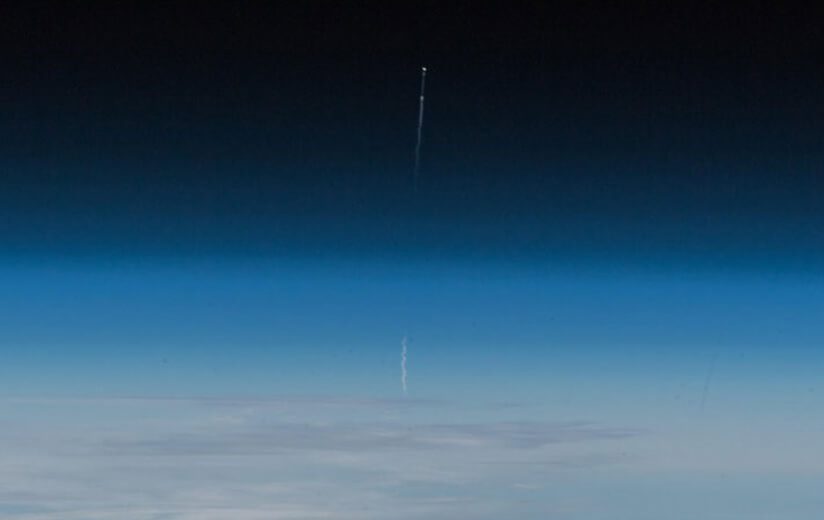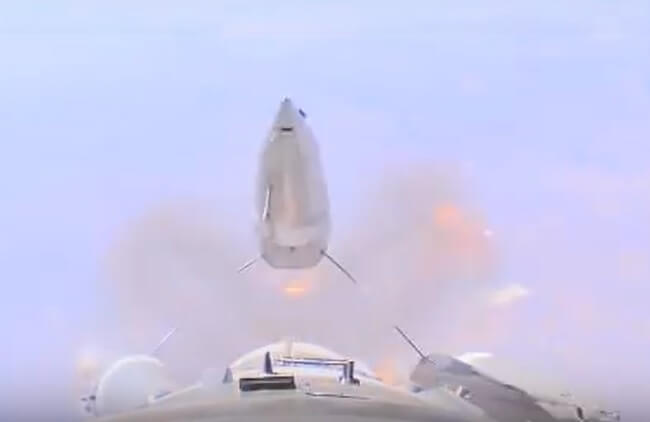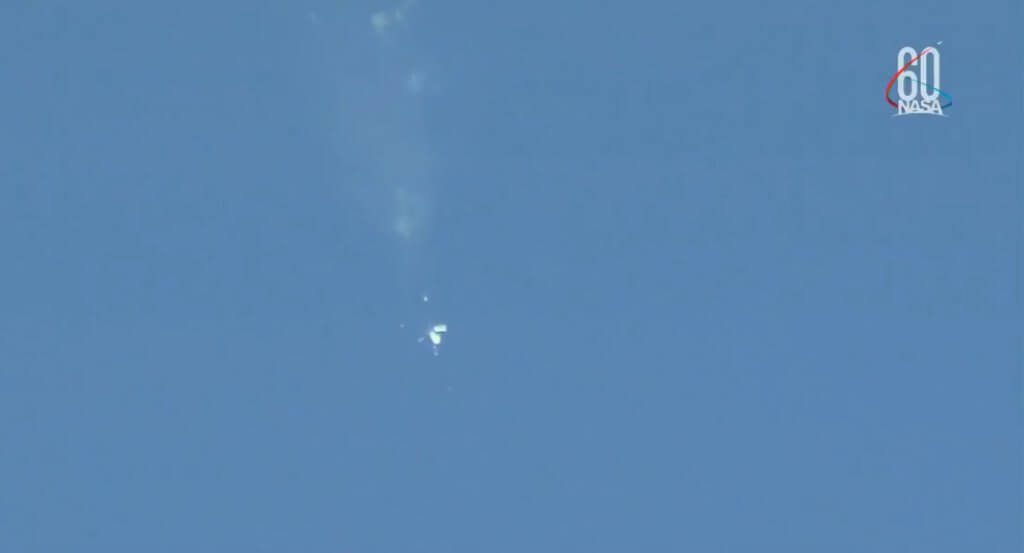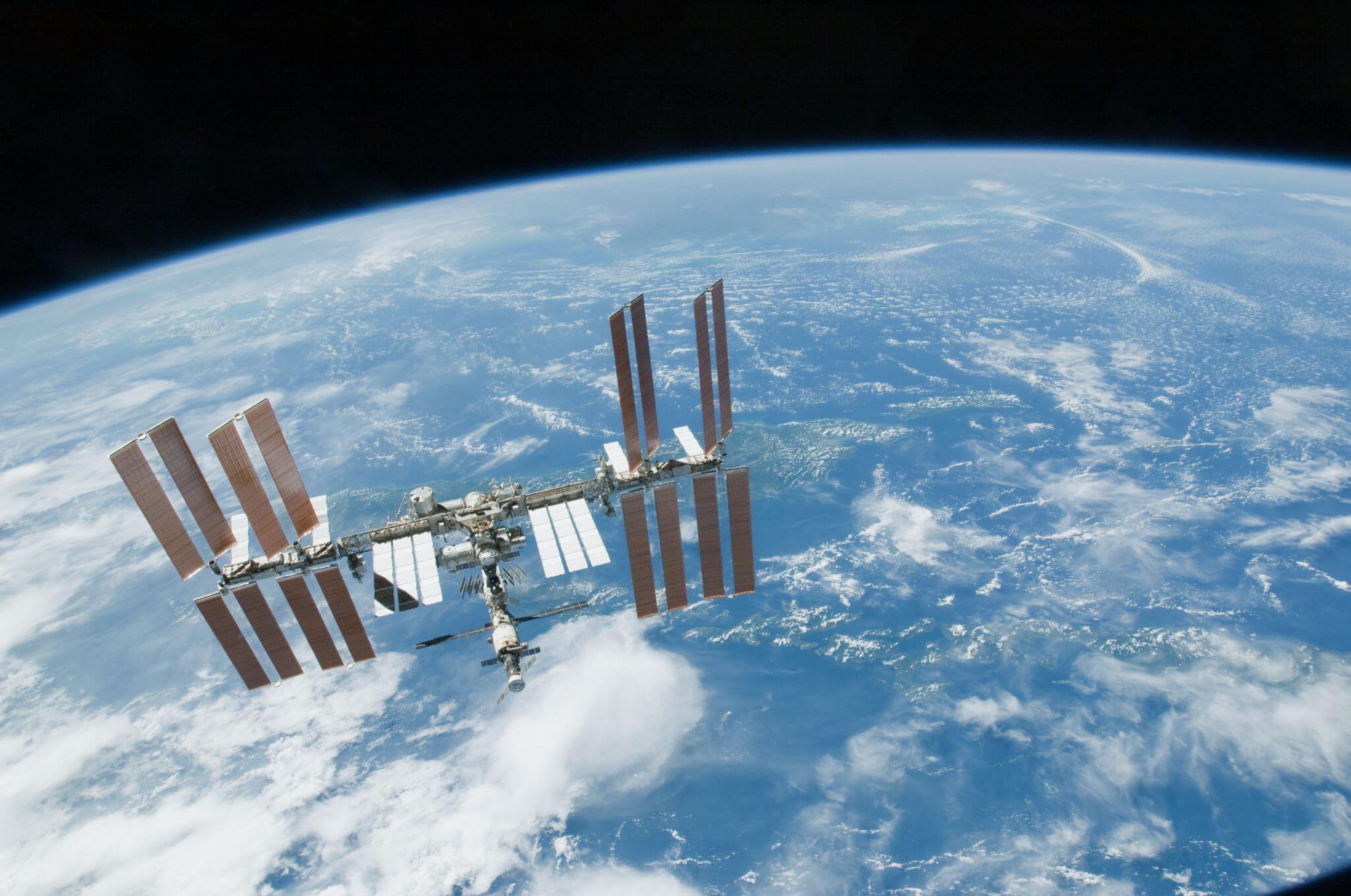The Soyuz-FG rocket carrying the crewed Soyuz MS-10 spacecraft, which was launched at 0840 GMT on 11 October 2018 from the Baikonur launch site near Tyuratam in Kazakhstan, has suffered a fault during its climb into orbit and failed to achieve orbital velocity. A problem is believed to have occurred in the core second stage, which apparently underperformed after separation from the booster/first stages. While fitted for three, only two crew were on this mission as part of a new Russian policy to lower its space station crew numbers. The two-man crew were Cosmonaut Aleksey Ovchinin and NASA Astronaut Nick Hague. Both safely made an emergency escape landing. The spacecraft had been due to dock with the International Space Station (ISS) six hours after launch.

On the ISS, ESA astronaut Alexander Gerst managed to image the moment the Soyuz escape system fired. Courtesy: ESA/Alexander Gerst
The crew were ejected inside their capsule by the automatic the escape rocket system once it became clear, via an internal angular velocity deviation warning, that the rocket would not achieve orbital velocity. The capsule and crew parachuted safely to Earth in Kazakhstan, 20km east of the town of Dzhezkazgan.
The crew suffered significant 6-7 g deceleration loads during the initial part of their emergency ballistic/suborbital trajectory back to Earth and were badly shaken. Helicopter rescue services were dispatched to meet them. If the crew had stayed on the rocket, it would have come back to Earth in a location several thousand kilometres down range possibly in an ocean splashdown that would have been far higher risk.
A full investigation has now taken place. The final reported indicated that one of the four first-stage booster failed to separate fully and struck into the core second stage, causing a rupture and visible debris.
Each first-stage booster is held in place by its own thrust pushing into a cone. Once this thrust is ended, the booster starts to fall away. To prevent it striking the second stage, a valve is released in a 45 degree canted nozzle, venting liquid oxygen oxidiser propellant to push the booster away from core. The final investigation confirmed that there had been a failure of the valve to open preventing this “push away” in one of the Block D boosters, and that this was caused by damage to a contact/uncontact sensor signal being transmitted to trigger the valve. The cause was a deformation (6-degree bend) of the contact sensor during final assembly of the rocket at Baikonur Cosmodrome launch site near Tyuratam. A full video clip of the separation failure and rupture is here.

Still from in flight footage of Soyuz MS-10 launch shows the left hand booster pointing towards the core whereas the central and right hand boosters fall way cleanly. It caused a rupture and explosion immediately afterwards. Courtesy: Roscosmos

Apart from the four first stage boosters and core stage, debris appears to be visible in this shot of the Soyuz FG launch of Soyuz MS-10. Courtesy: Roscosmos via NASA TV
The escape element of the failure has echoes of the Soyuz-18 mission in 1975, when the crew had to make similar emergency use of the escape rocket. This event is the first failure of the FG variant of the Soyuz rocket in 68 launches. The escape rocket system was also used in the prelaunch explosion of the Soyuz T-10 mission in 1983.
The rocket and Soyuz spacecraft are insured under a “delivery to the ISS” contract for about US$71 million and a pay-out is now expected
Update on 25 October 2018: While the failure “grounded” Soyuz flights for a short time, the investigation soon found the cause and it was thought safe enough to resume Soyuz launches. Russia successfully launched the military Lotos-S class electronic intelligence satellite COSMOS 2528 at 0015 GMT on 25 October from the Plesetsk Cosmodrome in Northern Russia. NASA Administrator Jim Bridenstine has stated that he expects crewed Soyuz missions to the ISS to restart in December.
Comment by David Todd: After a “depressurising” hole was found on Soyuz MS-07 – thought to have been accidentally drilled during manufacture – and this launch failure, serious questions are again being asked about the safety and quality control of Russian space hardware






